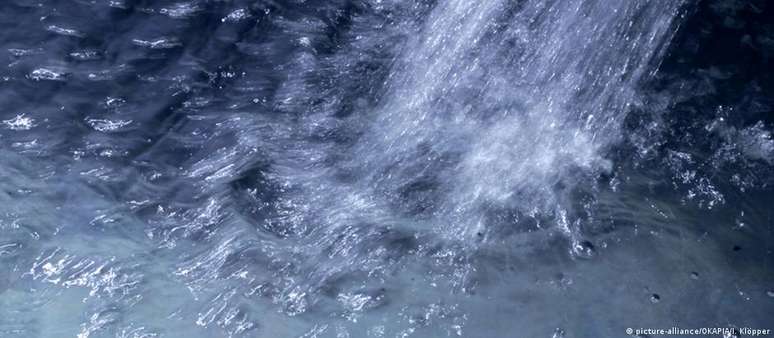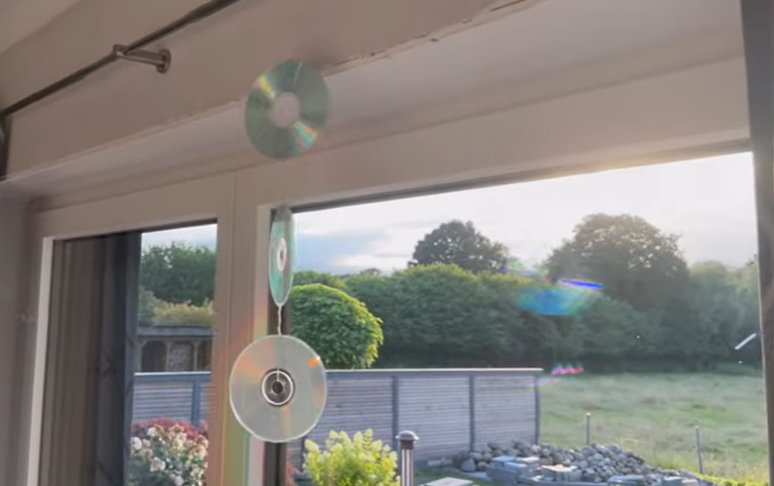Shortly before the floods, the government of Rio Grande do Sul made the use of Permanent Protection Zones, or APPs, more flexible. The measure is criticized by experts, who underline an environmental setback. In the “hierarchy” of the areas of native vegetation to be protected according to the Forestry Code, the Permanent Protection Areas (APP) can be considered particularly precious for the good functioning of nature. These are untouchable natural areas, where direct economic exploitation is not permitted, near any watercourse: rivers, streams, wetlands, streams, ponds, swamps or estuaries, whether or not covered by native vegetation, located in areas rural or urban.
If preserved, APPs function as specially protected “oases” within rural or urban properties. In this permanent protection zone it is prohibited to build, establish or explore economic activities. The objective is to protect the “generating nucleus” of life in that region: the source of the river, the riparian woods. In cases of planting, for example, the agricultural area must extend up to the beginning of the native vegetation on the banks of the rivers, without exceeding or suppressing it.
For rural producers, it may seem counterintuitive to have water on their properties and not be able to use it to irrigate their crops. However, not drying up the sources of the rivers is essential so that they do not dry up and disappear.
“Rivers are the cradles that generate life. So, in an area where you are going to plant, what do you do then? Protect the rivers. Remove weeds from other areas, but then if you want to recover that area, restore the vegetation one day , with the forest near the river it will be possible to expand. From the nucleus that contains the important elements it will be possible to recover the nature that was there”, explains researcher Rualdo Menegat, geologist, PhD in Sciences in the area of Landscape Ecology. . and professor at the Federal University of Rio Grande do Sul (UFRGS).
In Rio Grande do Sul it is easy to observe in the landscape when the protection limits of APPs are violated, says Ana Paula Moreira Rovedder, forestry engineer and professor at the Department of Forestry Sciences of the Federal University of Santa Maria (UFSM). and coordinator of the Study and Research Center on the Recovery of Degraded Areas (Neprade/UFSM).
“In the case of soybeans, it is very common for us to see the replacement of riverbanks with agricultural monocultures. So we see environmental crimes, because the riverbank is a permanent protection zone,” he points out.
Preserving APPs is essential to preserve the environment and make it more resistant to climate change: they keep the soil “alive”, with microorganisms that absorb and filter rainwater, and vegetation protects the banks of rivers, preventing flooding and erosion. Furthermore, when free from human intervention, APPs store rainwater underground and “return” it to rivers when the rain stops, preventing rivers from drying out.
“PPAs play an important role in keeping the water system functioning. When they are destroyed, two things happen: rainwater runs off faster, rivers rise and floods increase, and, because rainfall does not charge aquifers [armazéns subterrâneos naturais da água]rivers dry up immediately after rain,” Menegat says.
APPs in Justice
Researchers and academics consulted by the report see a recent environmental rollback in state laws relating to APPs, protected by the 2012 Forestry Code. Such areas are coveted by the agricultural sector and have been subject to irregular construction and interference by producers attracted by the They drain fertile lands and store water to replenish crops.
This debate will be analyzed in court. At the request of the Greens, last week the Minister of the Federal Supreme Court (STF), Edson Fachin, granted a ten-day deadline to the Legislative Assembly of Rio Grande do Sul and the government of Eduardo Leite (PSDB) to transmit information law that loosened regulations on dam construction in APPs: State Law No. 16,111, sanctioned by the governor in early April.
The project, according to the Legislative Assembly, had the support of the Federation of Industries of the State of Rio Grande do Sul (FIERGS), which in February presented studies on ICMS incentive models for producers who invest in the irrigation of their properties .
According to the Greens, the changes to the Rio Grande do Sul law represent a step backwards in the state’s environmental protection, in violation of the federal Constitution.
The author of the bill approved in March by the state Legislative Assembly, Republican congressman Zucco, claims that the legislation will help fight drought, a climate event that has affected Rio Grande do Sul for three consecutive years until 2023. The works in the APPS will ensure irrigation for agricultural production, he said.
The 2012 Forest Code provides that only environmental agencies can make an exception to the restriction and authorize the use and even deforestation of rural or urban permanent conservation areas; but, to do so, they must prove the hypotheses of public utility, social interest of the company or low environmental impact of the activity.
It is precisely in this exception that the argument of those who defended the change in state law lies: supplying producers during drought would be in the public interest. A “fallacious” argument, according to Menegat. “What they wanted is the proliferation of dams, which actually encourage flooding. These dams have been installed at the headwaters, in the upper reaches of the rivers, and lead to the interruption of the water cycle. We can build dams on the rivers, but never to the sources”.
A 2023 study by the Instituto Escolhas, dedicated to the analysis of sustainable development, highlights that Rio Grande do Sul has 1.16 million hectares in permanent conservation and legal reserve areas that need to be urgently recovered to increase capacity of water infiltration into the soil. “The reconstruction plans of Rio Grande do Sul must include the recovery of native vegetation, which is a natural infrastructure to avoid the repetition of tragedies,” says Sergio Leitão, executive director of Escolhas.
Water for agriculture
According to the National Water Agency (ANA), the greatest use of water in Brazil and in the world is attributable to irrigated agriculture, corresponding to half of all water withdrawn from the country’s sources, followed by urban human supply , which corresponds to approximately 24% of the total withdrawal. Essential for any rural property, water is used to quench the thirst of humans and animals, raise fish, irrigate, wash food before it is sold, among other activities.
According to ANA, Rio Grande do Sul, which accounts for 70% of Brazilian rice production, is the state that withdraws the most water each year, with irrigated rice responsible for the majority of irrigation water withdrawal in Brazil, with an annual average of 350 m³/s, which is equivalent, for example, to 70% of the demand of all Brazilian cities, according to a bulletin from the National Water Resources Information System.
The agricultural sector’s desire to store water has degraded APPs and caused rivers to dry up, Menegat says. The reclamation of APP areas and the construction of ditches, embankments and dams to guarantee water for crops and livestock have made typical wetland landscapes increasingly rare.
“The most significant environmental impacts in the state, linked to irrigated rice cultivation, are associated with the transformation of flooded floodplains for the use of flood irrigation systems; and with the drainage of wetlands”, underlines an analysis by the University Federal Office of Rio Grande do Sul on environmental issues in wetlands. “In the Gravataí river basin, in the north-east of the state, actions related to rice cultivation have caused, over the years, a series of changes in the hydrological dynamics of the river and in the wetlands, with consequent significant environmental impacts. In Furthermore, the withdrawal of water for irrigating crops in the summer months has generated conflicts between the demands of the agricultural sector and public supply”.
APPs, if used well, also favor agricultural production, as explained in the Embrapa document on ecosystem services. “Multifunctional landscapes benefit production systems by maintaining the flow of ecosystem services between natural areas, such as permanent conservation areas and legal reserves, and cultivated areas, maintaining their sustainability.”
In agriculture, according to Embrapa, science has also worked to reconcile the advantages deriving from the preservation of native forests with properties in favor of production. These techniques involve producers in designing “managed” agricultural landscapes, alternating crops with preserved stretches of natural vegetation and habitat for local fauna.
Rovedder says that, in times of extreme climate events, protecting APPs is just one effort needed to prevent new disasters. “Because even where there are permanent conservation areas, slopes and rivers, in this extreme moment the landscape was unable to resist,” he says.
In addition to the risks of new disasters, allowing the agricultural sector to access water from APPs in times of water scarcity increases competition for water, making it scarcer for people who share the same river basins. “Allowing these interventions in APPs is a big mistake,” assesses ecologist Marcelo Dutra da Silva, Doctor of Science and professor of Ecology at the Federal University of Rio Grande (FURG).
“I increase competition for APP water, which is already little for the basin. And, moreover, I interfere with nature even more,” Silva emphasizes, recommending several strategies. “I would encourage us to have more water reservation systems, in the form of dams, for rainy periods. It is more expensive, but we need to preserve the APPs. There has to be an effort in the opposite direction to what we have tried to do up until now. to date” .
Source: Terra
Rose James is a Gossipify movie and series reviewer known for her in-depth analysis and unique perspective on the latest releases. With a background in film studies, she provides engaging and informative reviews, and keeps readers up to date with industry trends and emerging talents.



![[Coluna] Does Brazilian protectionism inspire Trump? [Coluna] Does Brazilian protectionism inspire Trump?](https://p2.trrsf.com/image/fget/cf/774/0/images.terra.com/2025/10/16/2008907400-74231636354.jpg)


